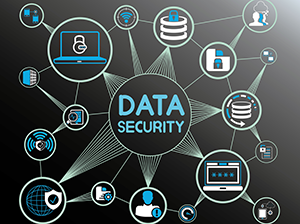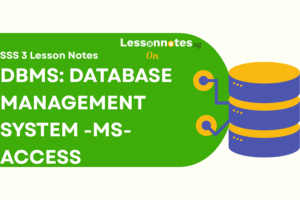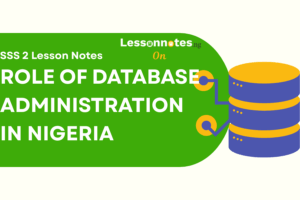Data Security SS2 Data Processing Lesson Note
Download Lesson NoteTopic: Data Security

Data security is the practice of keeping data protected from corruption and unauthorized access. The focus behind data security is to ensure privacy while protecting personal or corporate data.
It is a means of putting in place the different forms of information security controls to protect databases against compromise of their confidentiality, integrity and availability.
Risk Assessment
This will enable you to identify the risks you are faced with and what could happen if valuable data is lost through theft, malware infection or a system crash.
Securing Data
Since data can be compromised in many ways, the best security against misuse or theft involves a combination of technical measures, physical security and a well-educated staff. You should implement clearly defined policies into your infrastructure and effectively present them to the staff.
TYPES OF SECURITY CONTROL ON THE DATA
- Access Control: This is the selective restriction of access to a place or other resource. The act of accessing may mean consuming, entering, or using. Permission to access a resource is called authorization.
- Auditing: Database auditing involves observing a database to be aware of the actions of database users. Database administrators and consultants often set up auditing for security purposes, for example, to ensure that those without permission to access information do not access it.
- Authentication: This is the validation control that allows you to log into a system, email blog account etc. Once logged in, you have various privileges until logging out. Some systems will cancel a session if your machine has been idle for a certain amount of time, requiring that you prove authentication once again to re-enter. You can log in using multiple factors such as a password, a smart card or even a fingerprint.
- Encryption: This security mechanism uses mathematical schemes and algorithms to scramble data into unreadable text. It can only be decoded or decrypted by the party that possesses the associated key.
- Back Up: This is the process of making copies and archiving computer data in the event of data loss which is used to restore the original data.
- Password: This is a sequence of secret characters used to enable access to a file, program, computer system and other resources.
IMPORTANCE OF DATA SECURITY
- Data security is critical for most business and even home computer users. Client information, payment information, personal files, bank account details- all this information can be hard to replace and potentially dangerous if it falls into the wrong hands.
- Data lost due to disasters such as a flood or fire is crushing, but losing it to hackers or a malware infection can have much greater consequences.
MAJOR THREATS TO DATA SECURITY
- Accidents can happen due to human error or software/ hardware error.
- Hackers could steal vital information and fraud can easily be perpetrated.
- Loss of data integrity.
- Improper data access to personal or confidential data.
- Loss of data availability through sabotage, a virus, or a worm.
INTEGRITY CONTROLS
- Backups
This is the process of copying and archiving computer data so it may be used to restore the original after a data loss event. Backups have two distinct purposes but the primary purpose is to recover data after its loss, be it by data deletion or corruption. The secondary purpose of backups is to recover data from an earlier time, according to a user-defined data retention policy, typically configured within a backup application for how long copies of data are required. Backup is just one of the disaster recovery plans.
- Application Security
Application security is the use of software, hardware and procedural methods to protect applications from external threats.






















